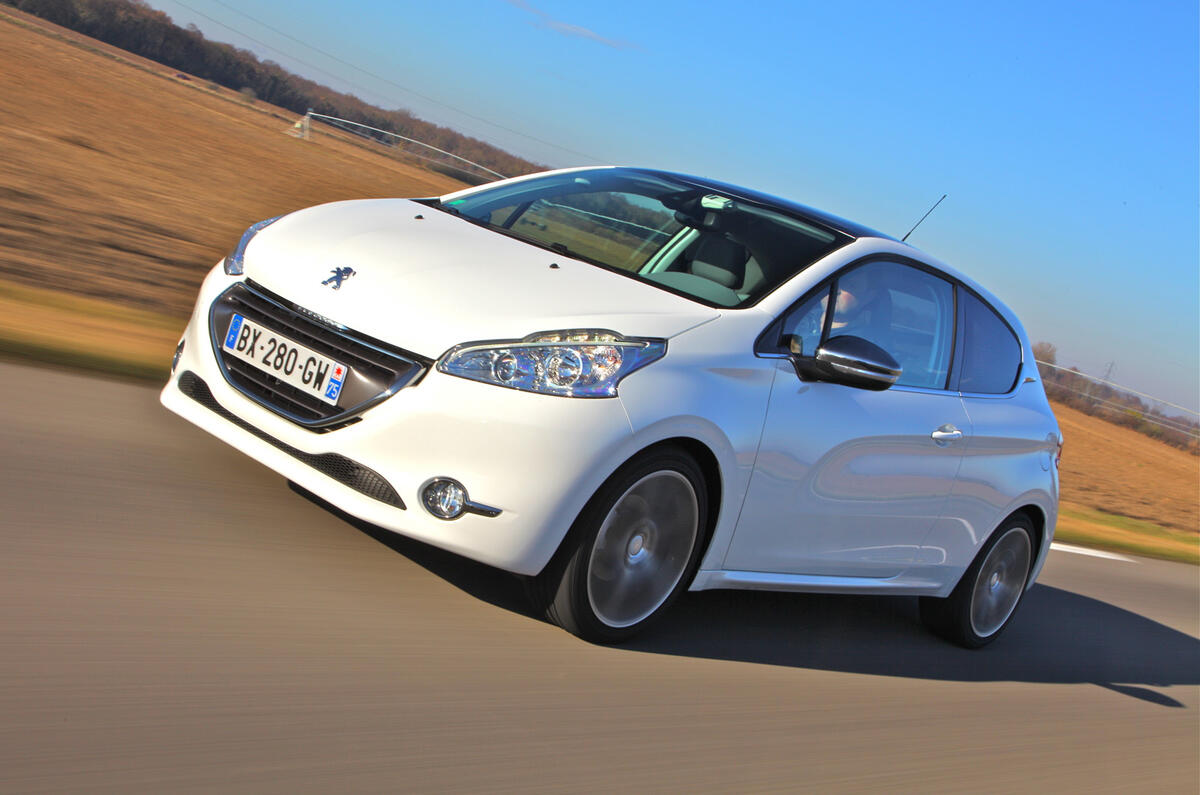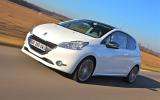What is it?
It is no exaggeration to call this the most important Peugeot in 20 years. This Peugeot 208 is the company's new supermini, heir to the legendary 205 that literally saved the company in the 1980s. The B-segment accounts for 40 per cent of Peugeot's car-building business and this new model - which introduces new standards of materials and manufacturing quality, plus completely new design style - has the weighty task of recovering the best-selling position attained by both the 205 and 206, but lost by the comparatively unsuccessful 207 during the 2000s. Peugeot has built 15 million superminis since it launched the 205 in 1983, but only 2.4 million of them were 207s.
The job is a tough one. The supermini class, which accounts for 30 per cent of sales in Europe, is smaller than it was in 2001 (4.1 million cars against 4.8 million) and whereas the 206 had 16 competitors in 2001, the 208 has 27 now. Even so, Peugeot confidently expects to be making 550,000 cars annually by next year, for sale mostly in Europe and South America. They will be almost exactly split between petrol and diesel models.
What’s it like?
The 208 is rather like Fiat's new Panda in consisting of an all new body and interior on a familiar but thoroughly revised platform and suspension. There are four trim levels (Access, Active, Allure and Feline) and three diesel and five petrol engine alternatives, ranging from the 68bhp, non-turbo 1.4 diesel to the 156bhp 1.6 turbo petrol unit. All engines except the punchiest 115bhp 1.6 turbodiesel, which has six speeds, come with five-speed manual gearboxes as standard.
Available in three- or five-door guise, the Peugeot 208 sits on the same wheelbase as the 207, with a developed MacPherson strut suspension at the front and a twist-beam system behind. Remarkably, the car is 70mm shorter than it predecessor (most of that length removed from the front overhang) and is 110kg lighter. The entry-level 1.0-litre Access three-door, powered by the smaller of two new three-cylinder engines - believed likely to cost from £9995 when prices are announced next month - weighs just 975kg, undercutting the lowest-powered 207 by a mighty 170kg, at great benefit to fuel consumption and CO2 output. Our test car was the top-end 115bhp turbodiesel, for the time being the only 208 to be equipped with stop-start, and with a standard six-speed gearbox, both oversights from the rest of the range in our opinion.
From outside, the 208 looks modern and pretty, and more of a ‘retail’ car than most thanks to its brightwork and svelte design. It is still easily recognisable as a Peugeot, though it has an all-new and much neater floating grille, new concave flanks and an aura of lightness and agility that always eluded the porky 207. The all-new interior design brings much higher standards of materials and manufacturing quality for a Peugeot, and introduces three intriguing new features, a smaller-diameter steering wheel, a fascia layout that requires you to look over the wheel at the instrument pack not through it as with most rivals, and a new touch screen (in 80 per cent of models) that is located high and within easy reach. It is an entirely different layout from previous Peugeots and all rivals.
It is obvious in your first few hundred metres of driving what impressive efforts Peugeot has put into matching the 208 with the best-driving cars in the market. The 115bhp diesel feels refined, long-legged and strong in the mid-ranges, and is especially good at fast motorway cruising. The ride is on the firm side and a shade noisy by Fiesta/Polo standards over the worst bumps, but our tests on the bad roads of Portugal seemed to show that the car will work well on the bad roads of Britain. The steering feels deliberate and accurate, though perhaps not quite as intuitive as the leading pair. Cornering grip levels are high; the 208 feels very stable and postpones final understeer until it is cornering extremely hard. The ESP, standard on every model, rarely intrudes. This an enjoyable, easy-driving car whose more petite dimensions are instantly obvious from the way it goes.















Join the debate
Add your comment
Re: Peugeot 208 1.6 e-HDi
Can't wait to hear what the entry level models are like - sub-£10k is tempting and the weight loss is a step forward. What will they do with that huge LCD screen though? Just rip it out, or leave it blank...?
Re: Peugeot 208 1.6 e-HDi
Was once fond of Peugeots & it is great to hear that the dynamism is back and hopefully a great increase in build quality. Owned 404, 505 x 2 (GTD & STi), 205 x2 (GRDs) All bullet proof, great to drive. The only mistake was a 309 - & that was the last Peugeot in the family Stable. Have missed their fun. Am surprised at Steve Cropley comments on the position of the console, & whose writing passion for all things automotive is unquestioned. I have recently installed an android based heads-up app that provides speed, lane departure and much other key driver info. My personal conclusions are that safety is significantly enhanced if the driver does not need to drop his eyes to read the instruments. It would seem that Peugeot is going the right way - but even better if information was provided at the level of the rear view mirror.
Re: Peugeot 208 1.6 e-HDi
Now this just looks odd